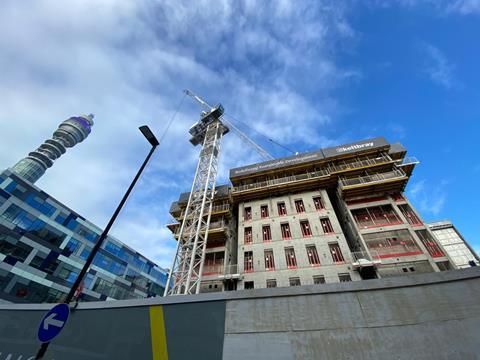Firms set for flat 2024 with growth expected next year, consultant adds
Contractors in the capital are scrambling to fill order books with competition in London hotting up in the face of falling workloads.
Aecom’s annual London Main Contractor Report said the rate of tender activity in the capital was at 74% putting it on a par with the 75% recorded from 2020 when covid-19 lockdowns limited the amount of work available.
The consultant said tender activity is typically between 60% and 70% when the market isn’t experiencing major shocks.

The report said increased competition was coming as 20% of tier 1 firms reported a declining pipeline of new work in light of lingering economic headwinds.
A fall in new starts has been partially driven by London’s residential sector, where projects are being held up in order to meet new regulation, including the new Building Safety Act.
Residential work is, however, expected to pick up next year once developers and contractors have got to grips with the requirements of the new rules.
The report also warned that lower workloads might hit tier 2 and 3 firms harder as they have less cash in the bank and run shorter order books.
But tier 1 firms said they expected work to rise by 10% over the next three years while 70% of tier 2 firms said revenues will jump somewhere between 5% and 40% over the same period.
Brian Smith, the head of cost management and commercial at Aecom, said: “There is a sense among London-based contractors that 2024 is not a year for ambitious growth. Instead, it’s a year to re-enforce resiliency and dependability. However, their order books for 2024 are relatively healthy and so their focus has turned to opportunities that will be on site in 2025.
“Last year brought a change in the tendering environment, with firms being more open and seeking opportunities to tender for work, and that’s going to become more entrenched this year, with fewer opportunities available.
“Two-stage contracting, where contractors are engaged earlier in the design phase before being appointed to deliver the project, is now by far the most popular procurement method. That’s because both clients and contractors see the value of having conversations about design, feasibility and price before anything is locked in.”



























No comments yet